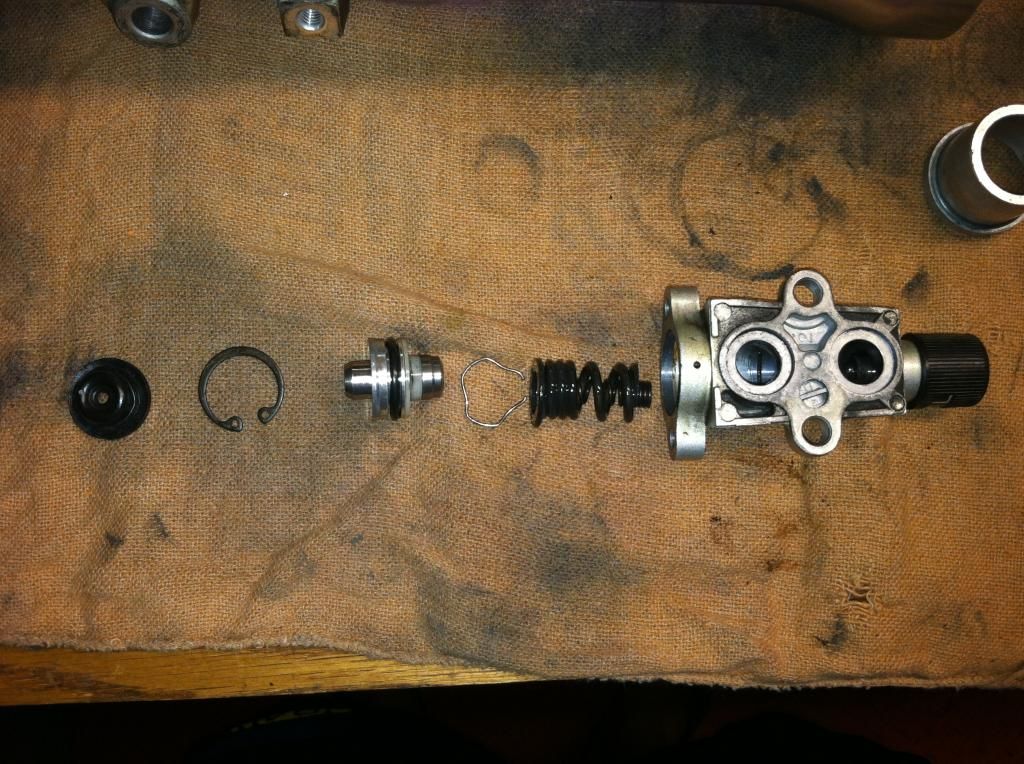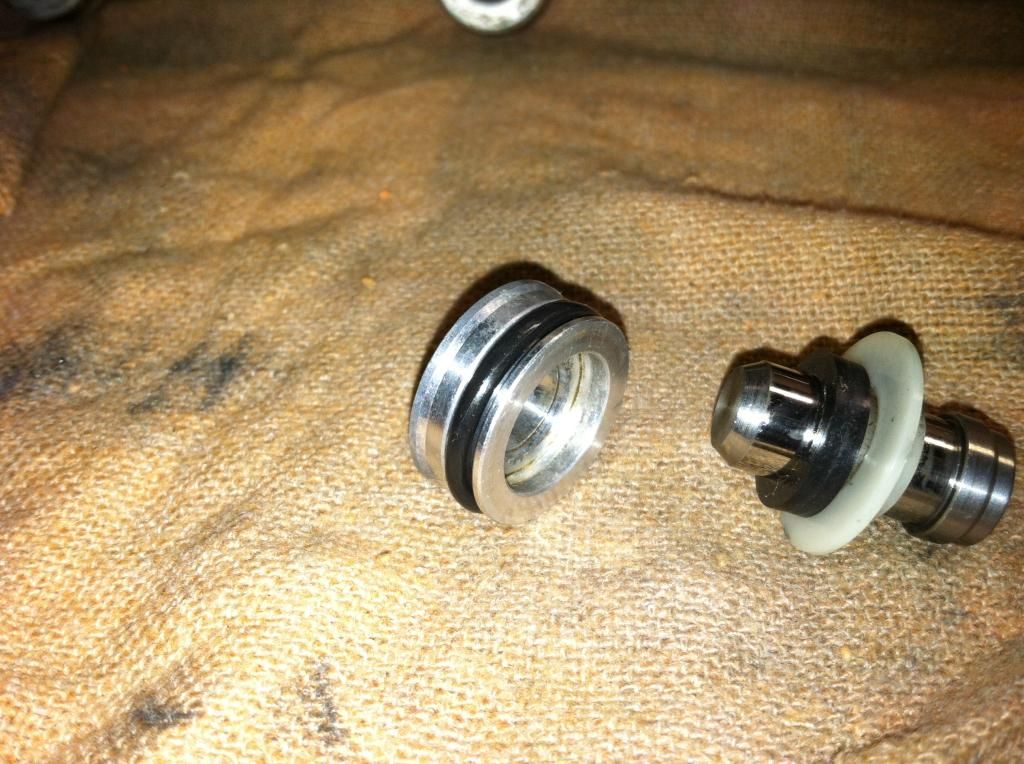Yep, a lot going on.... 
First, if you're installing emulators, you don't need to drill that hole. The emulator takes over the function of the factory valve. That's why I completely removed the valve from mine; it would no longer work as designed. I also welded up the original 'adjustment holes'.
As to the stops, I wasn't comfortable removing them as that's the lower limiter at full fork compression but leaving them in place as-is created several problems. As noted, the original 'circuitry' is such that on compression, oil is forced out the holes below the stops, through the 'anti-drive' valves, then back into the forks. If you remove the valves and block the holes, the oil has no path and the fork will be hydraulically 'locked'.
The original number of holes and sizes in the damper rod was selected to control damping, but again, this function is now transferred to the emulator and is adjusted there. Hole size is no longer important as long as it's big enough to not restrict flow. In other words, too big is OK, too small isn't. Now, my emulators were designed for 39mm Harley forks and they specified four pretty large holes to be drilled in the OEM damper. These were larger than I was comfortable with drilling in the smaller FJ dampers, so I drilled the stop to allow flow past the stop using the OEM holes plus additional holes above the stop that would present the same or more opening than what the four larger holes represented. You could drill more than four holes above the stop for the same effect. One other reason I drilled the stops as that lets me use the lower fork screw as a drain hole; that screw is originally used to 'index' the damper rod so that the adjustment at the top is correct, no longer needed as the factory damper is gone. The holes allow the oil to drain past the stop.

First, if you're installing emulators, you don't need to drill that hole. The emulator takes over the function of the factory valve. That's why I completely removed the valve from mine; it would no longer work as designed. I also welded up the original 'adjustment holes'.
As to the stops, I wasn't comfortable removing them as that's the lower limiter at full fork compression but leaving them in place as-is created several problems. As noted, the original 'circuitry' is such that on compression, oil is forced out the holes below the stops, through the 'anti-drive' valves, then back into the forks. If you remove the valves and block the holes, the oil has no path and the fork will be hydraulically 'locked'.
The original number of holes and sizes in the damper rod was selected to control damping, but again, this function is now transferred to the emulator and is adjusted there. Hole size is no longer important as long as it's big enough to not restrict flow. In other words, too big is OK, too small isn't. Now, my emulators were designed for 39mm Harley forks and they specified four pretty large holes to be drilled in the OEM damper. These were larger than I was comfortable with drilling in the smaller FJ dampers, so I drilled the stop to allow flow past the stop using the OEM holes plus additional holes above the stop that would present the same or more opening than what the four larger holes represented. You could drill more than four holes above the stop for the same effect. One other reason I drilled the stops as that lets me use the lower fork screw as a drain hole; that screw is originally used to 'index' the damper rod so that the adjustment at the top is correct, no longer needed as the factory damper is gone. The holes allow the oil to drain past the stop.




Comment